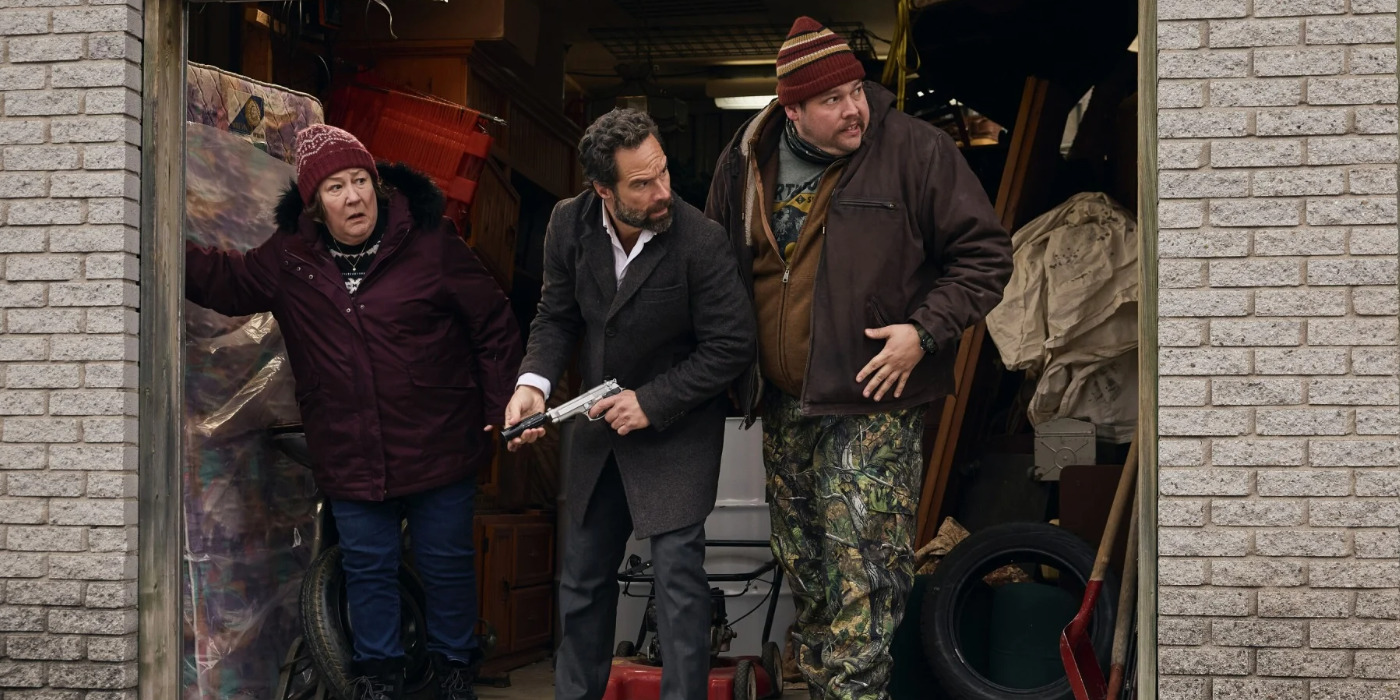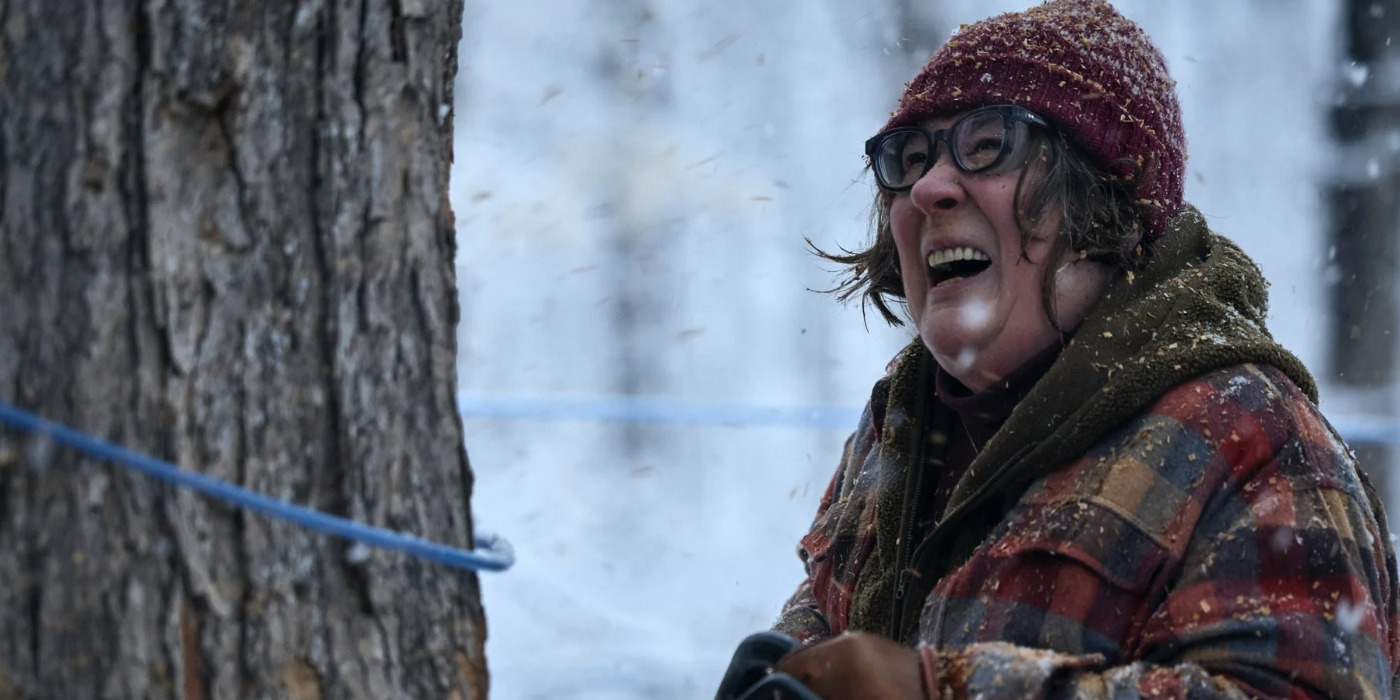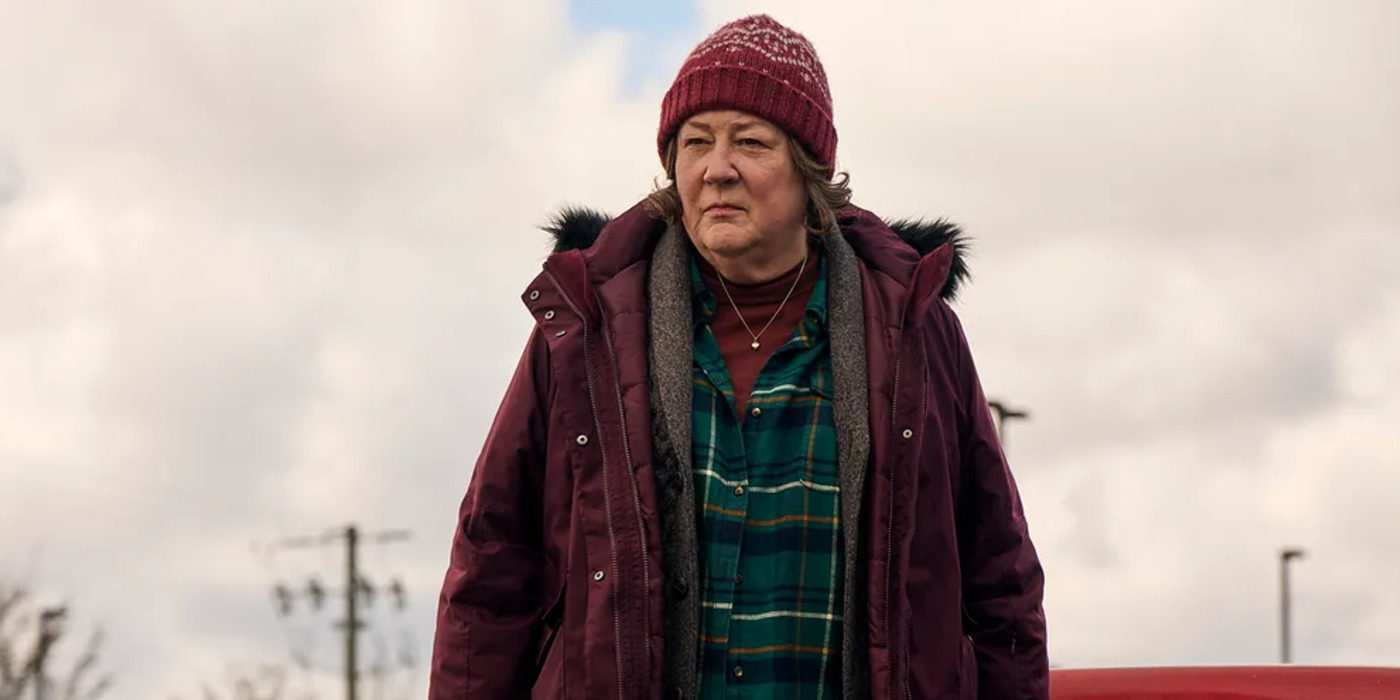‘The Sticky’ is an unusual crime-comedy film about a million-dollar theft that finds a maple syrup farmer at its narrative center. Ruth Landry has been in the maple syrup business for a long time, keeping her comatose husband’s farm alive and productive. However, Leonard, the greedy head of the Quebec Maple Association, attempts to rob Ruth of her land on a technicality. Consequently, desperation and a need for vengeance drive Ruth to alternative solutions: a high-stakes heist with the dubiously dangerous criminal, Mike, and a debatably useful security guard, Remy, as her partners. Naturally, their grand larceny plan revolves around Leonard’s maple syrup reserve, sheltered away in a poorly secure warehouse facility.
Somehow, these pieces result in an overarching game that involves murder and mobsters. Despite the eccentricity of a maple syrup robbery, ‘The Sticky’ actually retains fairly firm roots in reality in its portrayal of an unconventional but wholly real heist. Consequently, this brings Ruth Landry’s character under question in terms of her involvement in the crime as the brains of the operation.
Ruth Landry Parallels Richard Vallières’ Real-Life Crime
Ruth Landry undertakes a unique path in ‘The Sticky.’ Her story begins with her being the unofficial owner of the Landry maple tree farm. She runs her business under her husband’s license—a detail that eventually becomes the fuel for Quebec Maple Association head, Leonard, to attempt intimidation for her to sell the land. Not only does he offer her a lower price for the land, but he also drowns her in fines to force her hand. This directly plays into Ruth’s decision to join Mike and Remy in their outlandish heisting scheme. In real life, Richard Vallières underwent a similar turn of events.

In 2007, the Quebec Maple Syrup Producers (then known as the Federation of Quebec Maple Syrup Producers) fined Vallières 1.8 million Canadian dollars for selling maple syrup illegally. In Quebec, under the law, the QMSP regulates the provincial syrup trade, and any trade that takes place without them—barring certain exceptions—is considered illegal. Thus, Vallières, who was often known as a “barrel roller” for his ability to facilitate trade directly between producers and buyers, inevitably came up on the organization’s radar. According to Vallières, this resulted in the QMSP seizing his house, presumably in an attempt to settle his fines.
Consequently, a few years later, Vallières and his collaborators hit the QMSP’s maple syrup reserve in Saint-Louis-de-Blandford, Quebec, in a planned robbery that lasted over 10 months. He and his team reportedly siphoned syrup out of barrels to covertly steal the organization’s products before illegally selling them. Ultimately, they managed to steal an estimated 18 million Canadian dollars worth of syrup (though the amount tends to vary from source to source). Upon conviction, Vallières admitted that his involvement in the heist—dubbed The Great Canadian Maple Syrup Heist—stemmed from monetary motives and the urge to settle a personal grudge with the QMSP. Thus, while the real story of Vallières somewhat departs Ruth’s on-screen narrative, points of similarities can be evidently drawn between the two, especially in terms of motive.
Angele Grenier Could Have Potentially Contributed to Ruth’s Character
The parallels between on-screen Ruth Landry and real-life Richard Vallières are mostly confined to their involvement in the maple syrup heist against a regulatory body. Still, many discrepancies remain between the two personalities. Nevertheless, some of these character quirks and traits don’t necessarily have to be entirely fictitious aspects of Ruth’s character. Either by coincidence or intention, the show’s protagonist shares some life beats with Angele Grenier, a Canadian maple syrup producer from rural Quebec.

Grenier owned a farm where she and her husband produced maple syrup straight from tree sap. Since the law mandates the syrup trade in the province take place through the Quebec Maple Syrup Producers, Grenier—and many others like her—faced many limitations in their ability to sell their products. Consequently, in the early 2010s, she and her husband began illicitly selling their maple syrup across provinces. As a result, she collected a fine of 500 thousand Canadian dollars alongside the possibility of prison time. Therefore, the similarities between Grenier and Ruth emerge as maple syrup farmers frustrated by Québécois trade laws. However, unlike Ruth, she wasn’t a part of a heist. Instead, she faced a long and tenuous legal battle against the QMSP.
Ultimately, Grenier ended up losing this battle and had to sell her maple tree forest to proceed with an out-of-court settlement with the organization. As such, differences remain between Grenier and Ruth as well. Nonetheless, the former’s rebellion against the maple syrup trade laws as a producer proposes a point of connection between her and Ruth. Therefore, it’s possible she was one of the inspirations behind the character. Ultimately, Ruth’s adventures aren’t a faithful recreation of any one real-life individual’s experiences. Even so, through her possible real-life connections, the character presents a realistic account of maple syrup farmers struggling under trade laws.
Read More: Best Heist Movies on HBO Max


You must be logged in to post a comment.